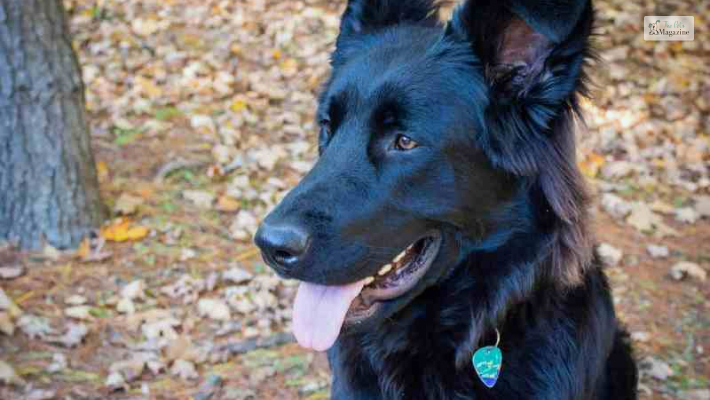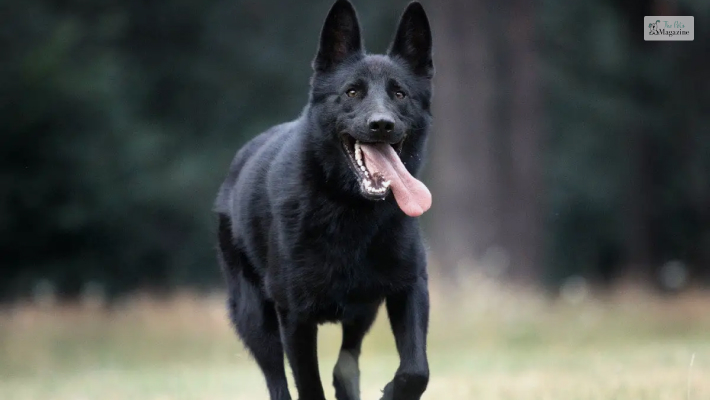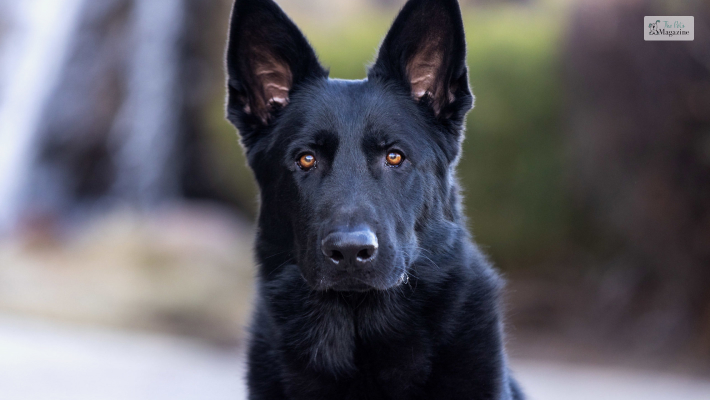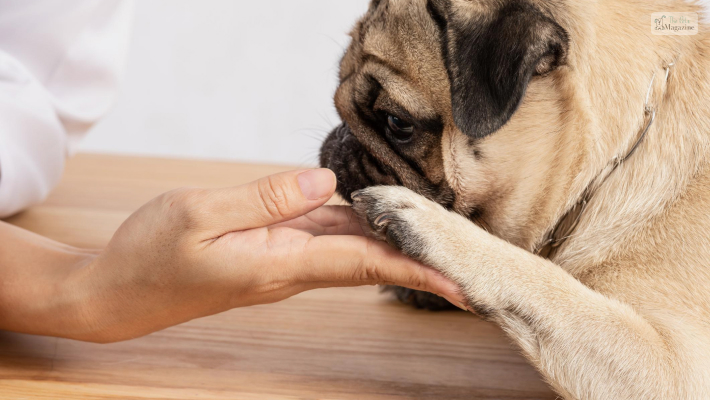Blue German Shepherd: A Complete Breed Profile


The German Shepherd is one of the most popular dog breeds in the United States. But often, it is thought that this dog breed comes only in black and tan color. However, that is not the case. The German Shepherd is the step breed that has many branches.
Out of all the branches, Blue German Shepherd is the rarest. With the same temperament and characteristics, this dog breed is the newest addition to the German Shepherd family.
In this guide below, we will talk about the German Shepherd and try to cover every aspect.
What Is A Blue German Shepherd?

A Blue German Shepherd is the diluted Black Shepherd. It has both recessive genes that dilute the color of its fur. So, unlike the traditional German Shepherd with brown and beige, the Blue Shepherd has a dark blue or faded grey color to their coat.
The faded coat color makes it easy for people to identify them. However, the coat color of a Blue German Shepherd does not remain the same throughout their life. In fact, the color changes in three different phases.
- Blue to Beige.
- Blue to Black.
- Blue to Sable.
Despite their appearance, a Blue German Shepherd has the same temperament, physical characteristics, and health concerns as a traditional German Shepherd.
History Of Blue German Shepherd
The origin of the German Shepherd comes from a herding dog, but after being recognized by Captain Max Von, their behaviors and characteristics have been amplified. Today, German Shepherds have established themselves to be the best working dogs by taking job roles as guide dogs, Search & Rescue dogs, Military dogs, and family dogs.

There are several color variations of German Shepherd. The Blue German Shepherd is considered to be rarest. Although German Shepherd dogs are considered the best, being blue is a serious fault in the eyes of the American Kennel Club (AKC).
Breed Origin
To understand the Blue German Shepherd origin, we must start our journey by understanding the German Shepherd Origin.

German Shepherd is a dog breed that was used in herding. Despite being used for simple tasks, they showcased exceptional intelligence and loyalty. These characteristics caught the eye of Captain von Stephanitz. He bought the dog and decided to breed to create a new breed of dogs perfect for working.
Captain Von Stephanitz adopted the dog and named Horand, and created the first breed standard for the German Shepherd Breed.
Characteristics Of A Blue German Shepherd Dog
Before we move to their characteristics or breed overview, you need to know that this is not a mixed breed. They are a result of gene variation of standard German Shepherds. So, they have the same characteristics and temperament as a German Shepherd.

However, Blue German Shepherds are rare and a lot more expensive than regular German Shepherds.
For instance, you will get a regular German Shepherd puppy for around $300 to $700. However, to get a blue German Shepherd puppy, you will have to pay somewhere around $1,500.
Appearance

Other than the color of the coat, a Blue German Shepherd is similar to a traditional German Shepherd.
The male will weigh between 60 and 90 pounds and be 24 to 26 inches in height from paw to shoulder. The female will weigh between 50 and 75 pounds and 22 to 24 inches in height.
Coming onto their coats, there are two types of coats: Long and Short-haired coats. The long-haired coat has a double coat. The undercoat is soft and thin, while the outer coat is thick and waxy.
The color of the Blue German Shepherd is the dilute variation of the traditional Black Shepherd.
Geneticists often use the term dilute when referring to the variation that affects the color. For example, the dilution gene affects the coat color but also changes the color of the eyes and nose.
Temperament

As I mentioned earlier, Blue German Shepherds share the same personality and temperament as regular German Shepherds. The German Shepherd is, favorably, the most loved family pet. This is no different for the Blue German Shepherd.
It is because of their rare colour that people are eager to get one. They are affectionate and love to cuddle up with their favorite humans.
This especially stands true for their master. German Shepherds are also called one-man-dogs because they tend to show more affection towards their master or to the people whom they see as the main caregiver.
The Blue German Shepherd shares the same confidence trait and has guarding tendencies. As long as they are socially trained, they can be utilized in the family environment.
Lifespan & Health Issues
The average lifespan expectancy of a Blue German Shepherd is 9 to 13 years. Because of inbreeding, there are many common German Shepherd health problems.
Of course, not all health problems are related to inbreeding; some are related to the size of the Dog. Here are some of the most common health problems a Blue German Shepherd faces:
- Hip Dysplasia: Hip Dysplasia is quite common in German Shepherd Dogs. It is a health issue that results in weak body joints and restricts the ability to move the body.
- Elbow Dysplasia: Like Hip Dysplasia, Elbow Dysplasia is a congenital condition that affects a large breed of dogs. Most often, this health issue is caused by bad genetics.
- Bloat: It is a gastric problem that happens when the dog eats too much food and then does too much physical activity. When this happens, and the dog cannot dispel the gas, the pressure of the Bloat makes it difficult for the dog to breathe.
- Cataracts: It is one of the health issues common to humans. As Blue German Shepherds age, they become Prone to cataracts. Most owners can tell this issue because of the cloudy eyes of the dog.
- Allergies: A Blue German Shepherd is more susceptible to allergies than other breeds. Allergies can be caused by a specific type of grass or a particular food. Feeding the
Some Other Health Issues Are:
- Dental problems
- Urinary tract infection
- Thyroid issues
- Bladder stones
- Nose Infection
- Panosteitis
- Diabetes
- Epilepsy
Food Diet
The Blue Shepherd is a large dog. Experts recommend the owner feed 20 calories per pound of their body weight. That means you need to feed them around 1500 calories.
When a Blue German Shepherd is a puppy, they need to be fed at least 4-5 times a day. This is particularly important for the larger breeds of dogs as they are more prone to Bloat.
However, if you have a busy lifestyle, you can decrease the number of meals and maintain the calorie amount.
Exercise & Training
Now that we know all about their traits and diet, it is time to know what their daily life looks like. Like traditional German Shepherd, Blue German Shepherd has care needs.
They need at least 90 minutes of exercise that focuses on sharpening their intelligence and physical activity.
Like any other German Shepherd, Blue German Shepherd is a medium energy dog and needs at least 60 minutes to 90 minutes of daily exercise. The exercise needs to be highly intensive and interactive.
Because of the guarding tendencies of the Blue German Shepherd, early socialization is important.
It is crucial for the Shepherd to be exposed to different situations, sounds, and other dogs of all shapes and sizes. If you truly want to enjoy your time with your Dog, ensure to train him properly.
As we have already mentioned, the Blue German Shepherd is an intelligent dog. They were bred to work. Thus, they have the natural drive to learn new things.
German Shepherds are loyal breeds and tend to suffer from separation anxiety. This problem can be treated by training your dog when they are puppies.
- Try leaving your pup alone for a couple of minutes and praising them for their hard work with lots of gifts.
- Over the next couple of months, train them accordingly to get them habituated to living a long period of time alone.
A lot of training guides will ask you to maintain a dominant stand while training. However, this method is outdated and leaves a negative effect on the Blue German Shepherd.
Grooming
When we talk about German Shepherds, there is no way we will omit their grooming. German Shepherds are a breed of dog that need regular grooming because of their coat.
There are two types of German Shepherd Coats:
- Short-Haired
- Long-Haired
Long-haired Blue German Shepherds have a double coat. The inner coat is thin and smooth. At the same time, the outer coat is thick and waxy. Due to the double coat, the coat of a German Shepherd shouldn’t be clipped, as this can interfere with the heat regulation.
Furthermore, it is important to understand that a German Shepherd does not need regular bathing. Frequent bathing washes away the natural oil from the coat and makes the skin dry.
Bathing your Blue German Shepherd once every couple of months will get the job done.
Coming to the short-haired German Shepherd, they tend to shed their coat more. Use a de-shading brush to brush through the undercoat.
Are You Planning To Get One?
Other than the color of the Blue German Shepherd, there are hardly any differences between a regular German Shepherd and a Blue German Shepherd.
Being considered a faulty color, it is mostly used as a family pet. Because of their Blue Color, they are rare, and hence, don’t be surprised if you are put on hold for a puppy.
However, if you are more into the performance that the German Shepherd is known for, it would be best to go for a darker and more traditional German Shepherd.
FAQs (Frequently Asked Questions)
Here are some of the common questions people ask while discussing the Blue German Shepherd.
German Shepherd Dogs are extremely popular in America. The AKC Club lists this breed as the second most popular dog breed. They are one of the best dog breeds that everyone can recognize and name.
However, a well-bred German Shepherd costs around $800. The price rises if you are looking for a rare breed, the Blue German Shepherd Dog. To adopt a Blue German Shepherd Dog, you might have to pay around $1200 – $1500.
Dogs are carnivorous animals. That makes their major diet meat-based. You must feed your Blue German Shepherd high-quality dog food that has all the nutrients your dog needs.
Table scraps can cause digestive upset. Give them little food at a time so that they can digest without any issue.
Small pieces of biscuits or a dog’s kibble might be a good option while training your dog. If you are feeding your high-quality dog food, mineral supplements are not necessary. However, adding some yogurt and cooked vegetables can be beneficial.
If you are a German Shepherd owner, do not get surprised after seeing a blue spot on your dog’s tongue. It is simply the result of gene mutation. They are similar to birthmarks on humans.
The change in pigmentation comes with age. In fact, the tongue is not the only part that is affected. You simply cannot see the other parts due to the coat.
The US military does not use the Blue German Shepherd and considers them to be defective breeds of the German Shepherd family. The AKC believes that they lack the necessary courage and intelligence needed to be in the military force.








Leave A Comment